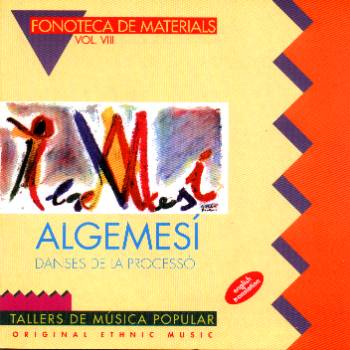This musical genre is transmitted orally and performed by semiprofessionals, men and women. The songs are especially ornamented and melismatic and they are performed in a particular virtuoso vocal style. The melodies are built in the E-mode and developed in a harmonic frame which alternates tonic and dominant chords. The cant d'estil is performed in a ternary rhythm with a characteristic feature in the fact that the vocal part shows a certain rhythmic freedom in relation to the instrumental accompaniment. The improvisation plays an important role in this genre. The instruments used in the cant d'estil can be quite varied, but very often, as the records of the Antologia show, the singers are accompanied by brass band and plucking stringed instruments. A very usual combination for today is clarinet, trumpet, trombone, one or two guitars and a guitarró, a widely used instrument in Valencia smaller than the guitar and with only five strings. In the two CDs of the collection are represented five different generations of singers who perform the distinct modalities of the cant d'estil: L'ú, L'ú i dos, L'ú i dotze and Albaes.
The first volume contains 29 recordings recovered from old slate records of 78 rpm which were released by the Company Emi-Odeón between 1915 and 1947. The sound quality is obviously limited by this circumstance, but this fact does not diminish the interest of the recording:
The second CD shows 30 pieces performed by 29 different singers which were recorded mostly in live performances (23 pieces) and also in studio (7 pieces), like the following L'ú: In this manner, the two CDs together give an interesting diachronic view of the cant d'estil and also show some differences in the performance, according to whether the songs are thought to be edited in commercial records - such as the examples contained in the first CD - or simply performed live in their natural context. The CDs are accompaniend by an extensive booklet with
historical pictures. It also includes a useful
"Musicological Analysis" of the cant d'estil
elaborated by Jordi Reig (in Catalan, Spanish and
English) as well two additional studies in Catalan with
the titles "The cant valenciŕ d'estil: Notes
for a conceptual and historical study" (Carles
Pitarch) and "The cant d'estil today"
(Josep Antoni Collado). The interested reader can also
consult the article of Carles Pitarch which deals with
this topic as well, En torno al "Cant valenciŕ
d'estil": Investigaciones y proyectos, published
in Transiberia
1, 1997.
The majority of these pieces (from numbers 1 to 27) are performed on the dolçaina (a folk instrument of the oboe family) and the drum. It is, in fact, a very habitual instrumental combination in the Iberian peninsula. These pieces have a very simple melodic design and are performed to accompany different dances which are grouped under the names of Moixeranga (three different pieces), Bastonets (18 pieces), La Carxofa, Els Arquets and Els Pastorets (4 pieces).
The items numbered 28 to 32 are boleros which are performed during the procession of the festivity. The music is played, in this case, by an amateur brass band of the same village and is also accompanied by the sound of castagnettes which in the festivity are played by dancers. The two last pieces (33-34) correspond to Els Tornejants, a warlike dance which is accompanied only by drum. The recordings are made in a studio. While this allows for a better sound quality than if the pieces had been recorded directly during the festival, on the other hand, the characteristic sound elements which accompany the performance of these musics during the celebration are missing. I'm referring here not only to the always interesting soundscape of every festival but also to the distinctive sound of the different stickdances (Bastonets), produced by the dancers themselves by striking the sticks and little metal shields which they wear. The CD is accompanied by a booklet in Catalan, Spanish
and English, which describes the different dances and
also shows some interesting historical photographical
examples. By contrast, references in the text to the
musical characteristics of the pieces are very
scarce. Josep Martí |

